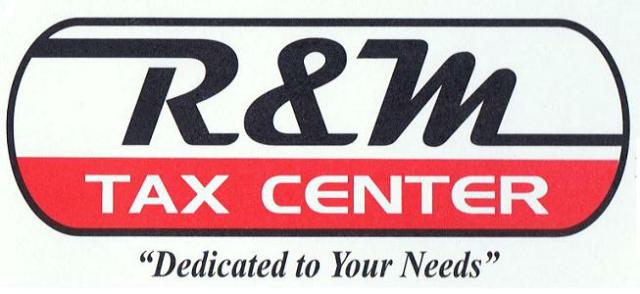Dependent Eligibility for Tax Purposes
R&M Tax Center Tax professionals are available for all your tax needs. Please call your local R&M Tax Center Tax office for further information. You are allowed one dependency exemption for each person you can claim as a dependent. The term dependent means:
An exemption for a qualifying child or qualifying relative can be claimed only if the three following tests are met;
- Dependent taxpayer test. You cannot claim an exemption for a person, if that person is claiming a dependent or their own exemption.
- Joint return test. You generally cannot claim a married person as a dependent, if they file a joint return.
- Citizen or resident test. The person must be a U.S. citizen, U.S. national, U.S. resident, or a resident of Canada or Mexico, for some part of the year.
To claim an exemption for a qualifying child, the child must meet the following five tests.
- Relationship test. Be the son, daughter, stepchild, eligible foster child, brother, sister, half brother, half sister, stepbrother, stepsister, or a descendant of any of them.
- Age test. Must be under age 19, or under age 24, if a full-time student. If permanently and totally disabled, there is no age limit.
- Residency test. Must have lived with you for more than half of the year.
- Support test. Cannot have provided more than half their own support.
- Qualifying child of more than one person test. You must be able to claim the child using the tie breaker rules, if the child is a qualifying child for more than one person.
- An adopted child is always treated as your own child. An eligible foster child is an individual placed with you by an authorized placement agency or by judgment, decree or other order of any court of competent jurisdiction.
There are four tests that must be met for a person to be a qualifying relative.
- Not a qualifying child test. A child cannot be your qualifying relative if the child is your qualifying child or the qualifying child of anyone else.
- Member of household or relationship test. Must live with you all year as a member of your household or be related to you in one of the ways for relatives who do not have to live with you. The relationship is not met if at any time during the year the relationship violates local law.
- Gross income test. Generally, you cannot claim an exemption for a person that has gross income of $3,650 (TY 2009) or more.
- Support test. Generally you must provide more than half of the person's total support during the tax year.
The above rules are basic and are defined in more detail in IRS Publication 501. A phase-out of exemptions occurs when your adjusted gross income goes above a certain amount.
Social Security Numbers for Dependents
- A social security number (SSN) is required for any person for whom you claim an exemption.
- If your dependent does not have and cannot get an SSN, you must list the individual taxpayer identification number (ITIN), or adoption taxpayer identification number (ATIN).
Some other important notes for your dependents:
Usually, the parent who has physical custody of a child for more than 6 months of the year is allowed to claim the exemption for that child. However, there are two instances when someone other than the custodial parent (guardian) can claim the child.
- The non-custodial parent can claim the exemption when the custodial parent signs a waiver, Form 8332, Release of Claim to Exemption for Child of Divorced or Separated Parents.
- The non-custodial parent meets the requirements for divorce executed before 1985 and not modified after 1984.
Beginning with 2009 tax returns, a noncustodial parent claiming an exemption for a child can no longer attach certain pages from a divorce decree or separation agreement instead of Form 8332 if the decree or agreement was made after 2008. This noncustodial parent will have to attach Form 8332 or a similar statement signed by the custodial parent and whose only purpose is to release a claim to exemption.
